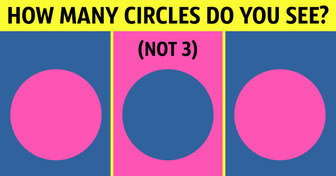20 People Who Prove Cleaning Is the Best Therapy You Can Get

Bees first appeared on Earth 130 million years ago, and they outlived dinos! What helped them survive for so long is the incredibly complex structure of their society — and teamwork!
Each bee has its own role and responsibility. Some of them build and repair their home, some bees protect them, and others clean the hive and get food. But what if you could sneak into a hive and figure out how this whole system works — what would you see inside?
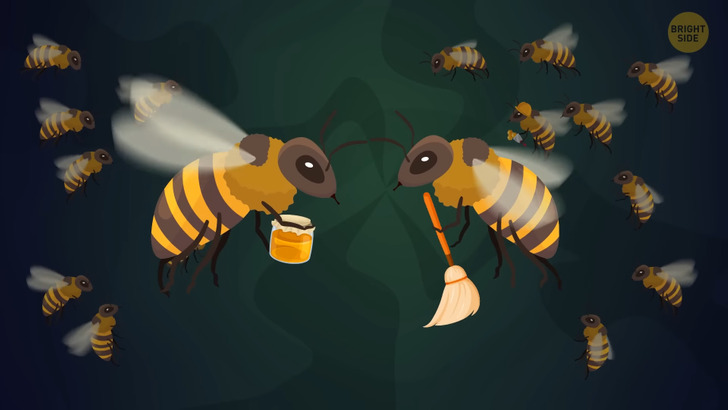
For some mysterious reason, it’s easy for you to get past the guards. But if you were a bee from another colony, they wouldn’t let you in without a fight. The guard bees look rather intimidating. They stand on their back four legs at the hive’s entrance, their front legs raised in the air.
These bees inspect every insect entering the hive with their antennae and front legs. Each hive has its own odor. And the guards can understand if a bee belongs to their colony by “smelling” it. Only the bees that live in the hive can get inside.
Suddenly, you see something strange. One of the guard bees has detected an intruder. An alien bee must have mistakenly tried to enter the wrong hive! But it’s carrying a load of nectar. And... the guard lets it in! Apparently, they don’t mind accepting free gifts of food — even from strangers.
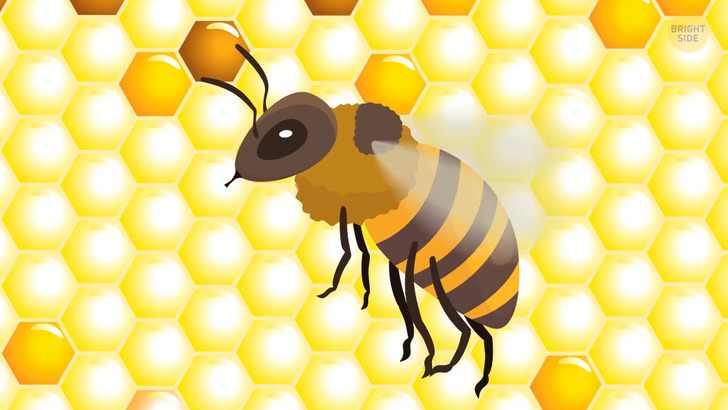
You feel too curious to linger there any longer. The hive has only one entrance. You notice that the walls around it look strange. You take a closer look and understand that it’s coated with a thin layer of some substance. It’s propolis — hardened plant resin produced by bees. It helps fight infections and cures different health problems.
A bit further, you can see countless honeycombs. They’re densely packed hexagonal cells made of beeswax. Bees use them to store food — pollen, and honey. That’s also where they keep eggs, larvae, and pupae.
Honeycombs are fixed to the walls of the hive. They stretch from top to bottom and are even attached to the sides. But you spot narrow passageways along the comb edges. Bees use them to move around the hive. You might also be able to squeeze through one of these tunnels.
After exploring the place, you figure out that bees store honey in the upper part of the comb. Beneath, there are cells that contain pollen. Then, there are cells used for keeping eggs with future worker bees. And at the very bottom, there are drone eggs.
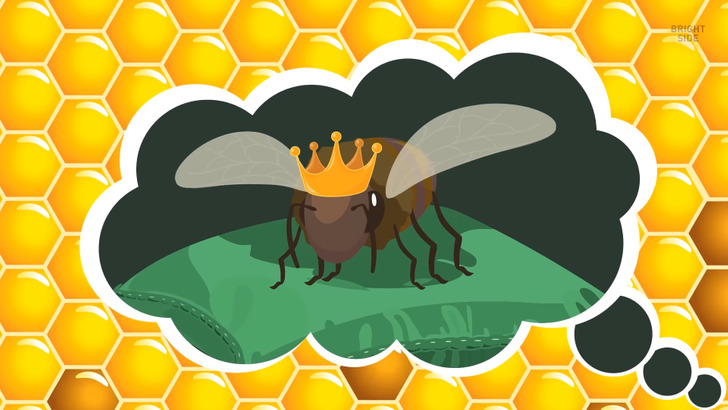
Of course, your ultimate goal is to see the queen bee. But it’s not that easy to find her. First, you come across lots of other bees. Most of them are workers. They make up the largest part of the hive’s population. And they’re all ladies! Each of them has its own task. The most common of them is foraging. You spot a bee leaving a hive and decide to follow it. The queen can wait a bit — you want to see how bees provide food for the hive.
The bee is buzzing ahead of you. After visiting a couple of flowers, it suddenly starts wiggling while hovering in one place. Ah, that’s the famous bee dance! That’s how bees communicate. Once a forager finds a perfect supply of nectar, it starts to perform a very precise dance. It consists of a series of straight lines and figure eights. Throughout the dance, the bee is also shaking its wings.
How long the dance lasts means how far away from the hive the nectar is. Every 75 milliseconds is another 330 feet to the distance. And how intense the dance is depends on the richness of the source of the nectar. The stronger the waggle is, the more nectar the bee has found. And there’s also the angle of the dance. It shows the direction of the nectar in relation to the Sun.
“Your” bee must have found tons of nectar — it’s practically vibrating! Suddenly, it starts flying back to the hive. You follow it. There, the bee does a “shake” dance in front of other worker bees. This is how it tells other bees they need to go foraging right away.
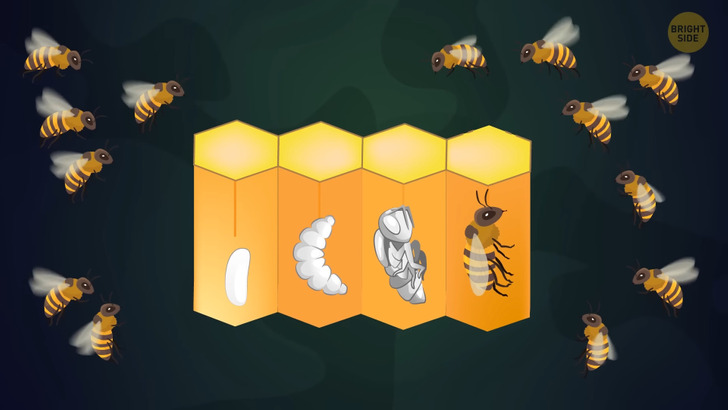
You decide to stay behind and just watch what will happen. Soon, the bees return. They’ve brought back a lot of nectar that needs to be ripened into honey. “Your” bee does a “tremble” dance this time. It’s shaking its legs in a way that makes its body tremble all over. This little dance makes other workers get down to process the nectar. It’s time for you to resume your search.
You dive back into the hive and begin to squeeze through small passageways. You come across the cells where worker bees begin their lives as eggs. It takes a bee 21 days to develop from an egg into a fully-grown worker.
The first task of this new worker is to clean the cell where it grew. The cell then becomes a nursery for a new egg. And the bee looks after this egg. Later, it feeds the larva and keeps it warm. During the next stage of its life, when it’s 12 to 20 days old, the bee starts doing chores around the hive. It produces wax, stores pollen and nectar, builds the comb, guards the entrance, and so on.
When the bee turns 20 days old, it becomes a forager. It looks for and delivers pollen, nectar, and tree resin — to make propolis. The bee also brings water. Bees need it for drinking and cooling the hive.
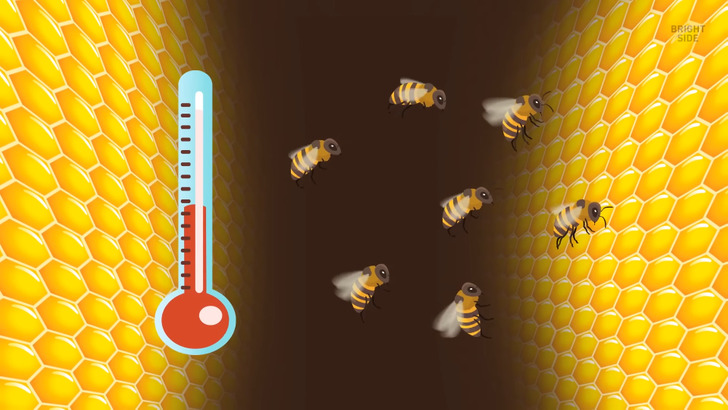
At one point, you see something that looks like a... hospital room? There, worker bees look after those that feel unwell. The “doctors” bring them different types of honey depending on their infection. If there’s no other way, they remove a sick bee from the hive. It helps to prevent the entire colony from getting ill.
And then, there are also temperature control bees. The temperature in the hive is usually around 95˚F. It’s crucial to keep it this way, not hotter, not colder. Otherwise, the eggs won’t hatch.
You see a group of bees and instantly understand they’re temperature bees. Apparently, the temperature in the hive has dropped. And now, the bees are trying to warm it up. They’re vibrating in a special way, which raises their body temperature. And you can feel the air around you become a bit warmer!
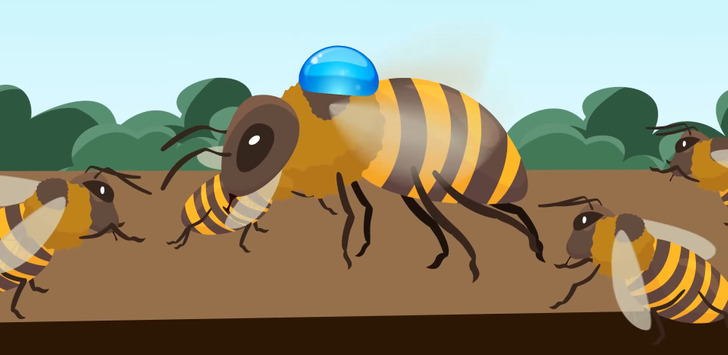
And if they needed to cool the hive, they would go and gather some water droplets. Then they would bring this water on their backs. Once in the hive, the temperature bees would buzz their wings very fast, making the water evaporate and lowering the temperature.
You move further and soon come across a bee you haven’t seen before. It has huge eyes, a large body, and no stinger. It’s a drone — the only kind of male bee in the hive. Drones don’t have any foraging tools either. Their only purpose is to mate with the queen and care for her.
The drone’s life isn’t too long. For one thing, if this bee manages to mate with the queen, it never survives the process. And if there’s a food shortage or winter is coming, worker bees usually kick drones out of the hive and don’t let them back in. Wow, that’s harsh.
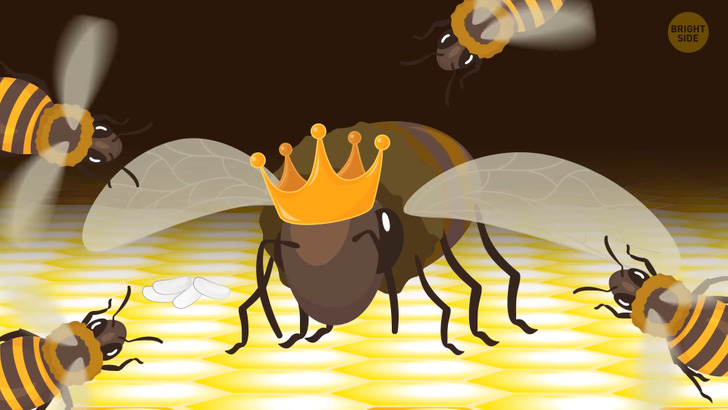
You keep going until you finally notice a nursery. There, you spot a bee that is twice the size of a worker bee. Your quest has come to an end — that’s the queen! This bee is the most important one for the hive. Because it’s the only bee that can lay eggs.
Despite her title, the queen doesn’t actually rule. And her brain is smaller than that of a worker bee. But she produces special pheromones that influence the mood of the entire hive.
The queen also gives birth to every single bee in the colony! When the queen is still a larva, worker bees feed her royal jelly. That’s a goop with super-high sugar content. A larger cell along with such a diet leads to a bigger body and the future queen’s ability to emit the pheromones.
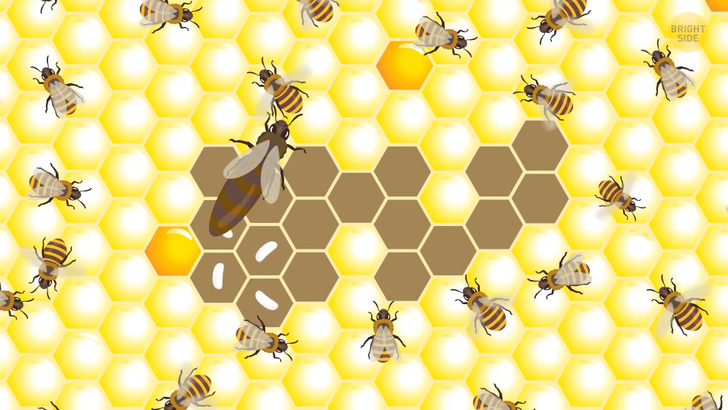
When the queen has mated with drones, she returns to the hive. Three days later, she starts laying eggs — and never stops. She works especially hard in the spring, laying one egg every 20 seconds! No wonder that later in the year, the colony already has a population of 30,000 to 60,000 bees!
But wait, something strange is happening here! A group of worker bees (in fact, lots of them, might be half the colony) leave the hive with the queen leading them! It means the colony has become too big.
The queen goes outside for the first time since mating. And the whole swarm sets off in search of a new home. Back in the hive, a new queen hatches from an egg eight days later.

